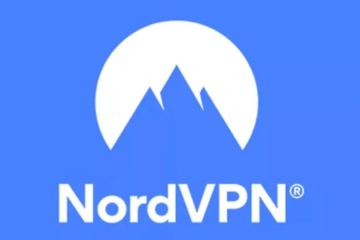Amidst the dominance of data, businesses are collecting more data than ever before. From customer interactions and transactional data to social media insights and IoT device outputs, the volume of data is growing exponentially. However, with great data comes great responsibility. To effectively leverage the power of data and AI, businesses need a robust data governance framework that ensures data quality, security, and compliance.
In this article, we’ll explore key strategies and tools for building a data governance framework that can support your organization’s data-driven initiatives.
Understanding Data Governance
Before diving into the strategies and tools, it’s essential to understand what data governance entails. Data governance includes a set of processes, policies, standards, and metrics that ensure the effective and efficient use of information. It encompasses data management, data quality, data stewardship, data security, and data compliance. The goal is to ensure that data is accurate, accessible, and protected, supporting the organization’s overall objectives.
Key Strategies for Building a Data Governance Framework
Data governance is the practice of managing and overseeing the availability, usability, integrity, and security of data used in an enterprise. A well-implemented data governance framework ensures that data is consistent, trustworthy, and doesn’t get misused. Let’s talk about the key strategies and tools that not only make data governance a strategic asset for business growth but also empowers your organization.
Setting the Stage: Define Your Data Governance Goals
Every successful journey starts with a clear destination. The same holds true for data governance. Before diving into specific strategies, take some time to define your organization’s data governance goals. Here are some questions to consider:
- What are the biggest challenges we face with data management?
- How can effective data governance improve our decision-making?
- What are the regulatory requirements we need to comply with?
By clearly outlining your goals, you can tailor your data governance framework to address your organization’s specific needs.
Building the Pillars: Core Strategies for Data Governance
Now that you have a roadmap, let’s explore the key strategies that form the pillars of a robust data governance framework:
- Establish Data Ownership and Accountability
Assign clear ownership for different data sets. Data owners are responsible for ensuring the accuracy, integrity, and security of their assigned data.
- Standardize Data Definitions and Processes
Create consistent definitions for key data points across the organization. This ensures everyone is on the same page and eliminates confusion.
- Implement Data Quality Management
Establish processes for data cleansing, validation, and error correction. High-quality data is the cornerstone of effective data and AI initiatives.
- Prioritize Data Security and Access Control
Implement robust security measures to protect sensitive data from unauthorized access. Define clear access control protocols to ensure data is only accessible to authorized personnel.
- Continuously Monitor and Improve
Data governance is an ongoing process. Regularly monitor your framework and make adjustments as needed to ensure it remains effective.
Empowering Your Team: The Role of Data Stewards and Governance Council
Building a strong data governance framework requires a collaborative effort. Here are two key players who will champion the cause:
- Data Stewards
These are individuals within your organization who act as champions for specific data sets. They work closely with data owners to ensure data quality, compliance, and accessibility.
- Data Governance Council
This is a cross-functional group responsible for overseeing the development, implementation, and ongoing management of the data governance framework.
By empowering these teams and fostering open communication, you can create a data-centric culture where everyone understands the importance of data governance and plays a role in its success.
Harnessing Technology: Tools for Effective Data Governance
Technology can be a powerful ally in your data governance journey. Here are a few tools to consider:
- Data Catalogs
These centralized repositories provide an overview of your organization’s data assets, including their location, ownership, and usage.
- Data Quality Management Tools
These software solutions help automate data cleansing, validation, and error correction processes.
- Data Lineage Tools
These tools track the origin and transformation of data, making it easier to identify potential issues and ensure data integrity.
- Access Control Management Systems
These platforms manage user access to data and applications, ensuring compliance with security protocols.
Building a Sustainable Data Governance Framework
Building a robust data governance framework is an investment in your organization’s future. It unlocks the true potential of your data, empowering data and AI initiatives, and ultimately driving business growth. Remember, data governance is a continuous journey – be prepared to adapt and improve your framework as your organization’s needs evolve.
By implementing the strategies and tools outlined above, you can navigate the data deluge and transform it into a source of clarity, confidence, and competitive advantage in the ever-evolving world of data and AI.
Keep an eye for more news & updates on TribuneTribune.Com!




